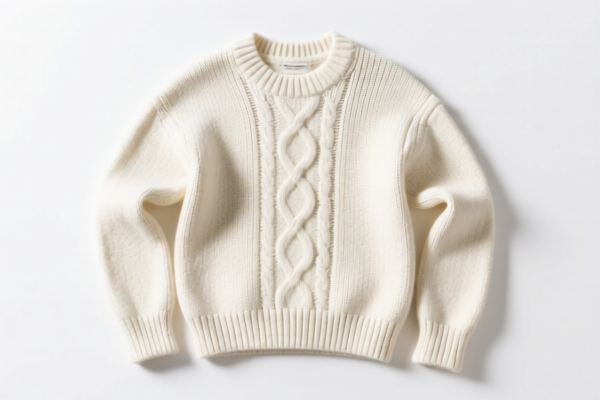| HS Code | Official Doc | Tariff Rate | Origin | Destination | Effective Date |
|---|---|---|---|---|---|
| 6110110015 | Doc | 53.5% | CN | US | 2025-05-12 |
| 6110909067 | Doc | 43.5% | CN | US | 2025-05-12 |
| 6114303014 | Doc | 52.4% | CN | US | 2025-05-12 |
| 6114909020 | Doc | 35.6% | CN | US | 2025-05-12 |
| 6210305010 | Doc | 44.6% | CN | US | 2025-05-12 |
| 5602909000 | Doc | 52.9¢/kg + 8%+55.0% | CN | US | 2025-05-12 |
| 5602906000 | Doc | 61.3% | CN | US | 2025-05-12 |
| 6211325050 | Doc | 45.6% | CN | US | 2025-05-12 |
| 6211420540 | Doc | 45.6% | CN | US | 2025-05-12 |




Sweater Suit
A sweater suit is a two-piece ensemble typically consisting of a sweater and matching trousers, designed as a more relaxed alternative to traditional suits. It bridges the gap between formal and casual wear, offering comfort and style.
Material
Sweater suits are commonly crafted from:
- Wool: Provides warmth, durability, and a classic look. Merino wool is a popular choice for its softness and comfort.
- Cashmere: Offers exceptional softness, luxury, and warmth, but is generally more expensive.
- Cotton: A lighter-weight option, suitable for warmer weather or a more casual aesthetic. Pima or Supima cotton offer superior quality.
- Synthetic Blends: Often include materials like polyester, acrylic, or viscose to enhance durability, reduce cost, or improve shape retention.
- Blends (Wool/Cashmere/Silk): Combining materials to achieve a balance of properties – warmth, softness, drape, and cost.
Purpose
The primary purpose of a sweater suit is to provide a stylish and comfortable alternative to traditional suits for:
- Business Casual Environments: Suitable for offices with a relaxed dress code.
- Smart Casual Occasions: Appropriate for events where a polished yet less formal look is desired.
- Everyday Wear: Can be worn as a comfortable and fashionable outfit for various social activities.
- Travel: Offers a comfortable and versatile option for travel, as the pieces can be mixed and matched.
Function
- Warmth: Provides insulation, particularly wool and cashmere options.
- Comfort: Generally more comfortable than traditional suits due to the softer fabrics and relaxed fit.
- Style: Offers a sophisticated and modern aesthetic.
- Versatility: Can be dressed up or down depending on the accompanying accessories and footwear.
Usage Scenarios
- Office: Paired with dress shoes and a collared shirt for a business casual look.
- Dinner Dates: Combined with loafers or Chelsea boots and a simple t-shirt for a smart casual ensemble.
- Weekend Events: Worn with sneakers or casual boots for a relaxed yet stylish appearance.
- Travel: The separate pieces can be worn individually or as a set, offering flexibility.
Common Types
- Crewneck Sweater Suit: Features a classic crewneck sweater paired with matching trousers. A versatile and widely popular option.
- V-Neck Sweater Suit: Offers a more elongated neckline, often paired with a collared shirt.
- Cardigan Sweater Suit: Includes a cardigan sweater instead of a pullover, providing a more relaxed and layered look.
- Rollneck/Turtleneck Sweater Suit: Features a turtleneck sweater, offering warmth and a sophisticated aesthetic.
- Fine-Gauge Sweater Suit: Made from a thinner yarn, resulting in a more refined and lightweight suit, suitable for warmer weather.
- Chunky Knit Sweater Suit: Constructed from a thicker yarn, providing a more casual and textured appearance.
- Patterned Sweater Suit: Incorporates patterns such as stripes, argyle, or Fair Isle for a more distinctive look.
Sweater suits generally refer to sets comprising sweaters and matching trousers or skirts, often worn as casual or semi-formal attire. The classification depends on the material composition and specific garment types within the suit.
Here are relevant HS codes based on the provided reference material:
- 6110110015: This code covers sweaters, pullovers, sweatshirts, waistcoats (vests) and similar articles, knitted or crocheted, of wool or fine animal hair, specifically of wool. This applies to sweater components within the suit if made entirely of wool. The total tax rate is 53.5%, comprising a 16.0% base tariff, a 7.5% additional tariff, and a 30.0% additional tariff effective after April 2, 2025.
- 6110909067: This code covers sweaters, pullovers, sweatshirts, waistcoats (vests) and similar articles, knitted or crocheted, of other textile materials. Specifically, it applies to knit to shape articles described in statistical note 6 to this chapter and is subject to cotton restraints, for men's or boys'. The total tax rate is 43.5%, comprising a 6.0% base tariff, a 7.5% additional tariff, and a 30.0% additional tariff effective after April 2, 2025.
- 6211325050: This code covers track suits, ski-suits and swimwear; other garments, specifically other garments, men's or boys', of cotton. This applies if the suit is made of cotton and classified as recreational performance outerwear. The total tax rate is 45.6%, comprising a 8.1% base tariff, a 7.5% additional tariff, and a 30.0% additional tariff effective after April 2, 2025.
- 6211420540: This code covers track suits, ski-suits and swimwear; other garments, specifically other garments, women's or girls', of cotton. This applies if the suit is made of cotton and classified as recreational performance outerwear. The total tax rate is 45.6%, comprising a 8.1% base tariff, a 7.5% additional tariff, and a 30.0% additional tariff effective after April 2, 2025.
Important Considerations:
- Material Composition: The material of both the sweater and trousers/skirt components is crucial for correct classification. If the suit contains components made of different materials, each component may require separate classification.
- Cotton Restraints: HS code 6110909067 is subject to cotton restraints. Ensure compliance with relevant regulations if the suit is made of cotton.
- Tax Rate Changes: Note that the additional tariff for several HS codes increases to 30.0% after April 2, 2025.
Customer Reviews
No reviews yet.